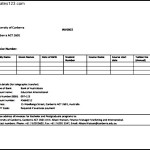Project Plan Template For Housing Development
Project Plan Template for Housing Development
A comprehensive project plan is critical for the success of any housing development. This template provides a framework for outlining key aspects of your project, ensuring alignment, minimizing risks, and staying on track. It covers essential elements from initial concept to final handover.
1. Project Overview
Start with a concise overview of the housing development project.
- Project Title: (e.g., “Oakwood Estates Residential Development”)
- Project Sponsor: (The individual or organization funding and overseeing the project)
- Project Manager: (The individual responsible for day-to-day execution)
- Project Goals: (Specific, Measurable, Achievable, Relevant, Time-bound (SMART) goals, e.g., “Construct 100 energy-efficient homes within 24 months, generating a 15% ROI.”)
- Project Objectives: (Concrete steps to achieve the goals, e.g., “Obtain all necessary permits by month 3,” “Secure construction financing by month 4.”)
- Project Scope: (Clearly define what is included and excluded from the project. Include the number of units, types of units (single-family homes, townhouses, apartments), amenities (parks, community center, pool), infrastructure (roads, utilities), and any external factors that might impact the project.)
2. Project Stakeholders
Identify all individuals and groups who have an interest in the project’s outcome.
- Developers: The company or individuals leading the project.
- Investors/Financiers: Banks, private equity firms, or individuals providing funding.
- Local Government: City council, planning department, building inspectors.
- Future Residents: Potential homebuyers or renters.
- Existing Community Members: Neighbors who may be affected by the development.
- Contractors and Subcontractors: Construction companies, plumbers, electricians, landscapers.
- Suppliers: Companies providing materials (lumber, concrete, roofing).
- Environmental Agencies: Organizations overseeing environmental impact and compliance.
For each stakeholder, define their:
- Role in the project
- Level of influence
- Communication preferences
3. Project Schedule
Develop a detailed timeline for all project activities. Use a Gantt chart or similar tool for visualization.
- Project Start Date:
- Project End Date:
- Key Milestones: (e.g., “Land Acquisition Complete,” “Permits Approved,” “Foundation Laid,” “Roofing Completed,” “First Unit Sold,” “Project Completion”)
- Tasks and Activities: (Break down the project into smaller, manageable tasks, e.g., “Conduct Soil Testing,” “Design Architectural Plans,” “Secure Building Permits,” “Install Utilities,” “Build Foundations,” “Frame Structures,” “Install Plumbing and Electrical Systems,” “Interior Finishing,” “Landscaping,” “Marketing and Sales”)
- Task Dependencies: (Identify which tasks must be completed before others can begin.)
- Task Durations: (Estimate the time required to complete each task.)
- Resource Allocation: (Assign resources (people, equipment, materials) to each task.)
- Critical Path Analysis: (Identify the sequence of tasks that directly impacts the project completion date. Focus on managing these tasks carefully.)
4. Budget and Cost Management
Create a detailed budget that covers all project expenses.
- Land Acquisition Costs: Purchase price, legal fees, surveys.
- Development Costs: Site preparation, grading, utilities installation, road construction.
- Construction Costs: Materials, labor, equipment rental.
- Professional Fees: Architect, engineer, surveyor, legal counsel, consultant fees.
- Permitting and Inspection Fees:
- Marketing and Sales Costs: Advertising, brochures, website, sales commissions.
- Financing Costs: Interest payments, loan fees.
- Contingency Fund: Allocate a percentage of the budget (typically 5-10%) to cover unexpected expenses.
Implement a system for tracking and managing costs. Regularly compare actual costs to budgeted costs and take corrective action if necessary.
5. Risk Management
Identify potential risks that could negatively impact the project and develop mitigation strategies.
- Market Risks: Changes in demand, fluctuations in interest rates, economic downturns.
- Financial Risks: Cost overruns, funding delays, inability to secure financing.
- Construction Risks: Weather delays, material shortages, labor disputes, accidents.
- Environmental Risks: Discovery of contaminated soil, regulatory changes.
- Legal and Regulatory Risks: Permit delays, zoning changes, lawsuits.
- Reputational Risks: Negative publicity, community opposition.
For each identified risk, document:
- The likelihood of occurrence
- The potential impact
- Mitigation strategies (actions to reduce the likelihood or impact of the risk)
- Contingency plans (actions to take if the risk occurs)
- Risk Owner (The person responsible for monitoring and managing the risk)
6. Communication Plan
Establish a clear communication plan to keep all stakeholders informed.
- Communication Channels: Meetings, email, project management software, newsletters, website.
- Frequency of Communication: Daily, weekly, monthly.
- Target Audience: Specify who needs to receive which information.
- Communication Content: Progress updates, budget reports, risk assessments, schedule changes.
- Escalation Procedures: Define how to handle issues and problems that need to be escalated.
7. Quality Management
Define quality standards and procedures to ensure that the project meets or exceeds expectations.
- Quality Standards: Building codes, industry best practices, design specifications.
- Quality Control Procedures: Inspections, testing, audits.
- Quality Assurance Processes: Training, documentation, process improvements.
- Defect Management: Procedures for identifying, documenting, and correcting defects.
8. Project Closure
Outline the steps involved in formally closing the project.
- Final Inspections: Ensure that all work is completed to the required standards.
- Obtain Certificates of Occupancy:
- Finalize Financial Records: Close out accounts, reconcile expenses.
- Handover to Owners/Tenants: Provide keys, documentation, and instructions.
- Project Documentation: Archive all project documents (plans, permits, contracts, reports).
- Post-Project Review: Evaluate the project’s success, identify lessons learned, and document best practices.
This template provides a solid foundation for planning your housing development project. Remember to customize it to reflect the specific characteristics and requirements of your project. Regularly review and update the project plan throughout the project lifecycle to ensure it remains relevant and effective.
Project Plan Template For Housing Development :
Project Plan Template For Housing Development was posted in August 12, 2025 at 10:29 pm. If you wanna have it as yours, please click the Pictures and you will go to click right mouse then Save Image As and Click Save and download the Project Plan Template For Housing Development Picture.. Don’t forget to share this picture with others via Facebook, Twitter, Pinterest or other social medias! we do hope you'll get inspired by SampleTemplates123... Thanks again! If you have any DMCA issues on this post, please contact us!




